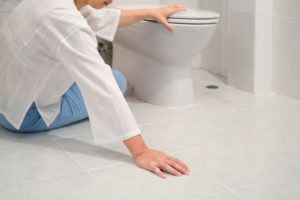
Our bodies change with age. Our vision can get fuzzy, our muscles may get weaker, and our steps can get shorter. It’s a normal part of the aging process, no matter how fit and agile you may be. That’s why any American over 65 is at risk of joining the one in four older adults who experiences a fall each year.
If you’ve fallen, it’s important to take stock of any injuries you may have sustained and get up in a way that won’t hurt you further. Here are some direction from AgingCare.com describing how to safely pick yourself back up after a fall:
- Stay calm.
- Examine yourself for injuries—bruises, possible sprains, broken bones.
- If you are confident you haven’t broken any bones or experienced a serious injury, search for the nearest piece of sturdy furniture. A chair would be ideal.
- Roll onto your hands and knees, then crawl or pull yourself over to the piece of furniture.
- Get into a kneeling position and place your arms on a stable area of the piece of furniture (e.g. the seat of the chair).
- Bring one knee forward and place your foot on the floor.
- Using your arms and leg simultaneously, push yourself up and pivot your bottom around until you’re sitting on the piece of furniture.
- Stay sitting until you’re confident you can move around without hurting yourself or falling again.
- If you find that you are unable to get up after falling, stay calm and try to alert someone to your predicament. While you’re waiting for help, try to keep warm and move around slowly to avoid placing too much sustained pressure on any one area of your body.
- Notify your doctor that you’ve had a fall—this is the most important step, as he or she can help provide support and guidance regarding fall prevention measures.
If you’ve experienced a fall, you may feel the need to stay away from activities that could make you fall again. That’s a natural reaction. But decreasing your activity will make you weaker, thus increasing the likelihood you will fall again. It’s a vicious cycle.
The best way to stay on your feet and avoid a fall is to continually work on your balance. Healthline describes a number of exercises you could work into your daily routine. For example, standing on one leg for 30 seconds and then the other while brushing your teeth. Or standing up from an armless chair without holding on to anything.
Meth-Wick has exercise equipment and programs that are tailored to seniors— air resistance machines rather than weight machines and recumbent, step-through bicycles rather than traditional bikes. It’s just another way Meth-Wick is designed to help you live your best life.